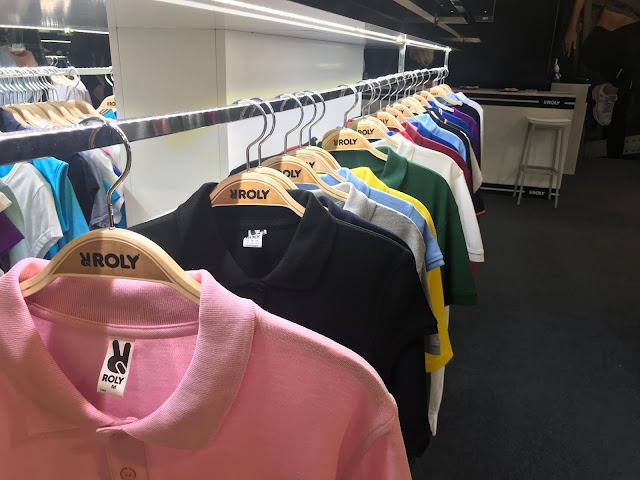What does your favorite t-shirt say? Casual or designer, funny or political, showing the world your favorite band, character, place, joke, or quote, t-shirts are everywhere. In fact, the global market produces over 13 billion t-shirts annually, and Americans alone buy 2 billion of them each year. How did this modest undergarment become the one item we all have in our closets? You can thank rebels, rock and roll, movements, and Mickey Mouse.
The Innovative Undershirt
What we know today as the t-shirt was first introduced by
the Cooper Underwear Company around 1904 as a "bachelor undershirt":
a stretchy, slip-on undershirt requiring no buttons, so no mending, designed
for single men with no sewing skills. With new knitting technology, jersey
t-shirts could be mass-produced and were more comfortable than flannel. For
pioneers like the P.H. Hanes Knitting Company and Fruit of the Loom, business
boomed.
Because they cost little to make and were so easy to wear
and clean, they quickly became the undergarment of choice for young men in
America, first for the U.S. Navy, then for workers in all industries. Worn
under uniforms and work clothes, hard-working men soon began discarding their
top layer and working only in their t-shirts on hot summer days.
Still, despite Sears Roebuck and Company's best assurances that men could wear their white cotton t-shirt as both an "outer shirt for sports and for lounging, or as an undershirt," "proper men" mostly wore their t-shirts under their clothes. And then came the Hollywood rebels.
Rebels and Causes
In the 1950s, the rebellious heartthrobs of Hollywood turned
the hard-working t-shirt into their fashion statement. Who could forget Marlon
Brando in A Streetcar Named Desire and James Dean in Rebel Without a Cause?
Soon, wearing only your t-shirt became not only acceptable but
"cool."
Around the same time, advances in screen printing opened new
opportunities for the plain t-shirt. Many Florida-based companies, like Tropix
Togs and Sherry Manufacturing Company, started putting resort names and
characters on t-shirts. Tropix Togs, for example, produced the first licensed
Mickey Mouse t-shirt.
Icons of a Generation
In the 60s and 70s, the t-shirt became the ideal canvas for
"wearable art." Technological advances made it easy and cheap to
decorate t-shirts, and people began to use them to express their views and
personalities.
That's when we saw the advent of the iconic t-shirts that
became the symbols of that generation: the tie-dye t-shirt of the flower power
movement; the political t-shirts with their anti-war message; the provocative
slogans of the punk movement.
Women claimed the t-shirt as their own in the 70s, and the t-shirt became unisex. We adopted the two-tone ringer t-shirt worn by teens and rock-and-rollers. Companies like Coca-Cola saw the potential for advertising.
That era produced t-shirt icons: rock band logos like the
Rolling Stones t-shirts with their "tongue and lips"; the bright
yellow happy face T-shirts, and the unforgettable "I ♥
N Y" t-shirt by Milton Glaser, to name a few. Even top designers like
Yves-Saint Laurent made their own high-fashion t-shirt.
Timeless Favorites
Simply sexy with its tight fit, comfortable, versatile, and
affordable, the t-shirt has remained a perennial favorite for Hollywood stars,
musicians, models, intellectuals, and the everyday man, woman, and child.
Today, custom t-shirts express our political views, rally us to our causes,
remind us of our favorite memories and make the world laugh with us.
Are you using t-shirts to advertise your business? If not,
you absolutely should. Here's why: for your customers, having your t-shirt in
their wardrobe means you will stay top in their minds. Even better, when they
wear it, they become a walking billboard for your business. It's the affordable
advertising solution that keeps on giving. At Habeco, we'll help you find the
most memorable t-shirts and promotional items your customers will cherish. Find
out more!


Comments
Post a Comment